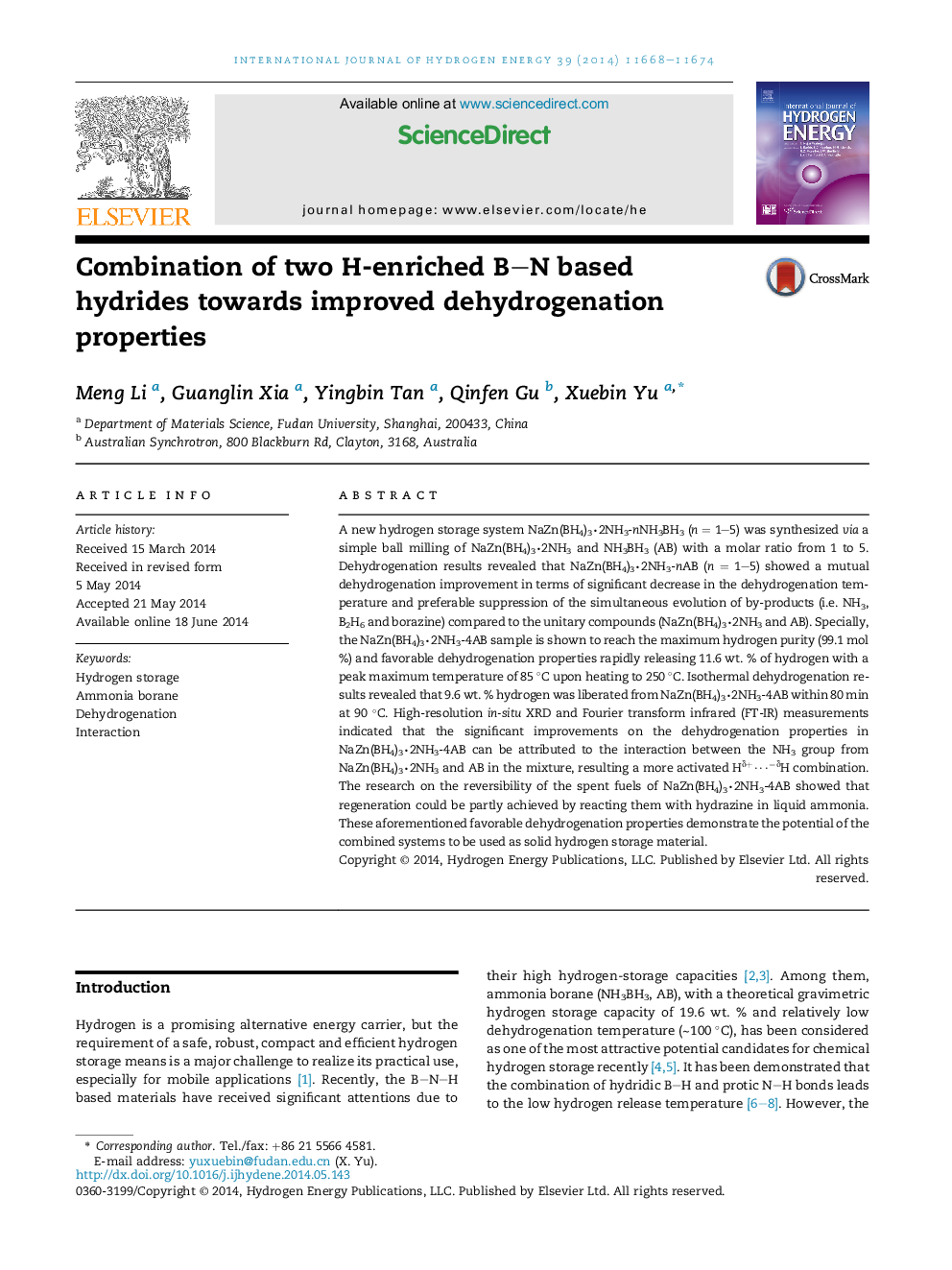| Article ID | Journal | Published Year | Pages | File Type |
|---|---|---|---|---|
| 1273186 | International Journal of Hydrogen Energy | 2014 | 7 Pages |
•A combined systems of NaZn(BH4)3·2NH3-nAB (n = 1–5) was synthesized.•NaZn(BH4)3·2NH3-4AB showed the best dehydrogenation property.•NH3 group plays a vital role in decreasing the dehydrogenation temperature.
A new hydrogen storage system NaZn(BH4)3∙2NH3-nNH3BH3 (n = 1–5) was synthesized via a simple ball milling of NaZn(BH4)3∙2NH3 and NH3BH3 (AB) with a molar ratio from 1 to 5. Dehydrogenation results revealed that NaZn(BH4)3∙2NH3-nAB (n = 1–5) showed a mutual dehydrogenation improvement in terms of significant decrease in the dehydrogenation temperature and preferable suppression of the simultaneous evolution of by-products (i.e. NH3, B2H6 and borazine) compared to the unitary compounds (NaZn(BH4)3∙2NH3 and AB). Specially, the NaZn(BH4)3∙2NH3-4AB sample is shown to reach the maximum hydrogen purity (99.1 mol %) and favorable dehydrogenation properties rapidly releasing 11.6 wt. % of hydrogen with a peak maximum temperature of 85 °C upon heating to 250 °C. Isothermal dehydrogenation results revealed that 9.6 wt. % hydrogen was liberated from NaZn(BH4)3∙2NH3-4AB within 80 min at 90 °C. High-resolution in-situ XRD and Fourier transform infrared (FT-IR) measurements indicated that the significant improvements on the dehydrogenation properties in NaZn(BH4)3∙2NH3-4AB can be attributed to the interaction between the NH3 group from NaZn(BH4)3∙2NH3 and AB in the mixture, resulting a more activated Hδ+···−δH combination. The research on the reversibility of the spent fuels of NaZn(BH4)3∙2NH3-4AB showed that regeneration could be partly achieved by reacting them with hydrazine in liquid ammonia. These aforementioned favorable dehydrogenation properties demonstrate the potential of the combined systems to be used as solid hydrogen storage material.
Graphical abstractThe combined systems of NaZn(BH4)3·2NH3-nAB (n=1–5) showed favorable dehydrogenation properties, with 9.6 wt. % of hydrogen liberated below 100 °C.Figure optionsDownload full-size imageDownload as PowerPoint slide
